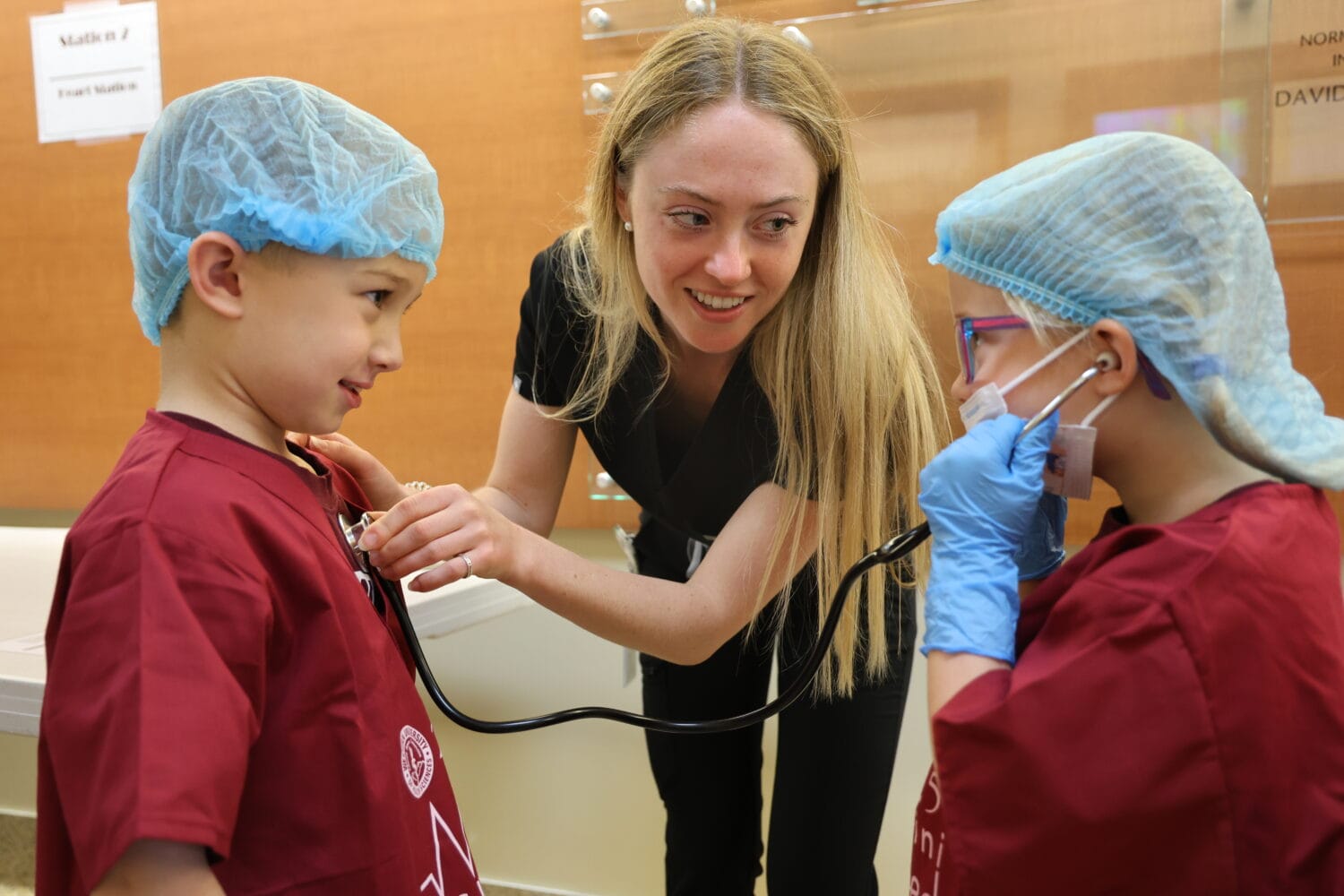WesternU's Educational Philosophy stands the test of time
Thirty years ago, one man mapped out in a small rented room in an old J.C. Penny building a framework that ultimately spawned one of the nation’s most unique health sciences campus.
The seeds planted all those years ago continue to bear fruit. The educational philosophy established by Dr. Philip Pumerantz, founding president of Western University of Health Sciences, resonates today in the teaching on campus and reaches into tomorrow with such programs as interprofessional education.
“If you didn’t question conventional wisdom you wouldn’t be able to deal with contemporary issues,” Pumerantz said. “We need to be in position to be ahead of the curve.”
Pumerantz was ahead of the curve before the road was even built. He wrote about new methods of teaching back in 1978, concepts that are still on the cutting edge today. He believed professors needed to move beyond the role of information provider.
“Thus, an essential element the teacher brings to a learning situation is the force of himself or herself as a person rather than some intellectual abstractions,” he wrote in July 1978.
The administration and faculty did their best to make the educational process inclusive so students felt they belonged to the school, said Dr. Richard A. Bond, vice chairman of the WesternU Board of Trustees and the first graduate of the College of Osteopathic Medicine of the Pacific in 1982.
“They weren’t afraid to step out of their traditional role to interact with us on a personal basis, which was reassuring because we were very anxious about a new school and a new educational process,” Bond said. “By having them interact, it helped reduce some of the stress.”
A lot of schools would benefit from revising their philosophy toward students, he said.
“Instead of viewing students as an enemy to deal with, view them as a partner with the opportunity to build relationships,” Bond said.
Pumerantz wrote in May 1978 that students should feel they have a place in the learning environment and that they should be active rather than passive recipients of their education.
“Since our program is designed to educate people-oriented osteopathic physicians, we need to build into our curriculum chances for students to develop the capacity to feel and to question,” he wrote.
Active learning is also found at other educational institutions. Cal Poly Pomona utilizes a “learn by doing” approach to education, which benefits graduates when they enter the work force, said Cal Poly Pomona President J. Michael Ortiz.
“Students leave this institution confident that they have already demonstrated the skills they need in the work force,” he said. “Clearly they make a better employee and a more confident applicant.”
Change is necessary to create student success, but it does not come easy, particularly in an institution of higher learning, Ortiz said.
“What you have to do is demonstrate to individuals on campus engaged in the educational process that unless they are willing to embrace change, they’re going to produce students ill prepared to face challenges in the real world,” he said.
Ortiz said he admires Pumerantz for his ability to maintain his vision of the university through the years.
“He worked diligently and did not abandon his original vision,” Ortiz said.
The early years of COMP were emotional because there was not a lot of continuity, but working with students from other schools made them appreciate their experiences, Bond said.
“As we got into our rotations, I think we started recognizing we received an education that was different than our peers, but still very relevant to the education that we needed to have to practice in a clinical setting,” Bond said.
COMP’s educational process was different than anything the students had experienced before, Bond said. Pumerantz was very innovative in his approach, he said.
“It permeated the whole school, how people were taught and how they learned based on his philosophy,” Bond said. “He was very original in how he thought of things. He was not afraid to try something new.”
The willingness to try new approaches continues at WesternU, which is in the early stages of developing a unique interprofessional curriculum where students from all disciplines will learn together in the classroom, in small group venues, and in clinical experiences with patients.
Pumerantz envisioned this concept of an interdisciplinary program 30 years ago, knowing that it required an evolution of new and rich attitudes about teaching and learning.
“A system of medical education that has not changed fundamentally for decades will never really be altered unless those responsible for the conduct of medical schools are willing to question some of the conventional wisdom,” he wrote.
“If we cast in concrete our processes of education, we will never be able to respond to the needs of our students and of the communities we serve and thus tragically prevent ourselves from achieving our real goal: the education of primary care physicians.”
Pumerantz told the incoming class of 1986 that their idealism will be the cornerstone of their success. He encouraged them to keep expectations high, so those they heal in the future can benefit from their experience.
“The principle philosophies haven’t changed,” Pumerantz said recently. “They’ve endured. When the doors opened, this was in place.”



